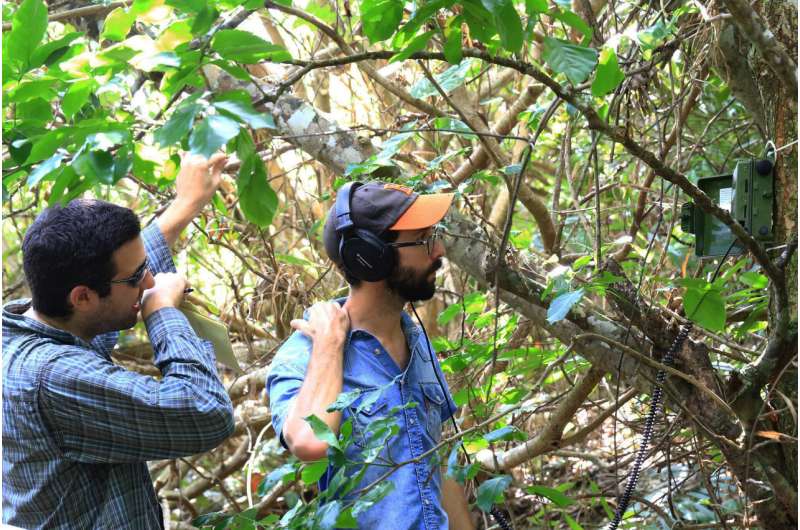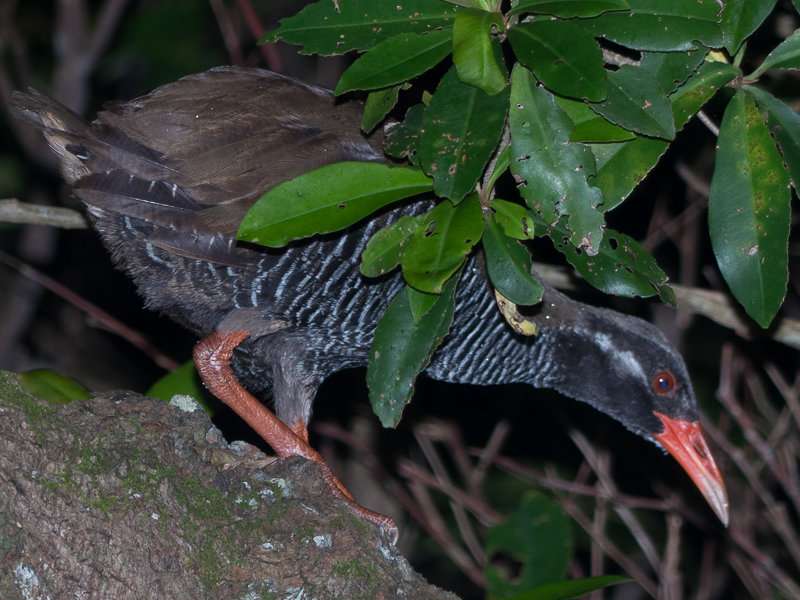Hearing the dawn chorus: Okinawa's new acoustic monitoring network

In Okinawa's thick, hot jungle and amid its urban sprawl, a collection of green boxes has sprung up in the past year. These monitoring stations are simple, yet they have the potential to remotely track animal life and weather conditions on the island, collecting vast stores of information about species on the island.
Using remote acoustic monitoring to track bird activity on Okinawa for the first time, scientists examined the distribution of birds on Okinawa. Their study was published this month in the journal Ecological Research. Their work is part of a new collaboration between scientists and citizens: the Okinawa Environmental Observation Network (OKEON) Churamori Project, which aims to better understand the island's terrestrial environment.
Researchers from the Okinawa Institute of Science and Technology Graduate University (OIST), and the University of Leeds (United Kingdom) recorded the "soundscape"—the acoustic landscape of natural and human-produced sounds—at five field sites over a one-month period in the summer. Microphones at the sites took in audio every 30 minutes, and recorded for a 10-minute period. Researchers then compared the distribution of their recordings to the makeup of the environment by land cover type.
The findings confirm what scientists have long thought to be true: there are more bird and animal sounds in less developed areas of the island, particularly in the north. There, a dawn chorus of chirps and calls awakens residents. Meanwhile, there are fewer animal sounds in the south of the island, where the landscape is more urban.
"Everyone knows a city sounds different than a forest, but scientists are increasingly interested in studying soundscapes in a quantitative way," said Evan Economo, senior author on the paper and head of the Biodiversity and Biocomplexity Unit at OIST. "How an ecosystem sounds has a lot of information in the processes occurring there."
For birds, which rely on their hearing to establish territory or feed or mate, human-caused sounds can be disruptive, Economo said. "Noise pollution can have a big effect."
The program itself is an important advancement for science on the island, said Nicholas Friedman, corresponding author on the study. The network's automation allows researchers to more efficiently monitor sites—and track multiple sounds at once. The use of a supercomputer based at OIST and sound-recognition software allows the team to significantly reduce time spent on analysis.

"In a previous model of ecological research we'd have technicians in the field constantly to get this kind of data," an approach that required extra training and additional time," said Friedman. "But with this approach we can make a model of how you identify birds, so we can survey more sites with less money."
The team aims to use the study as a basis for future research. They have expanded their recorders to 24 sites and will monitor multiple animals, including insects. The researchers have already collected more than 25 terabytes of audio—an amount that would take eight years to listen through without supercomputing power.
Provided by Okinawa Institute of Science and Technology



















